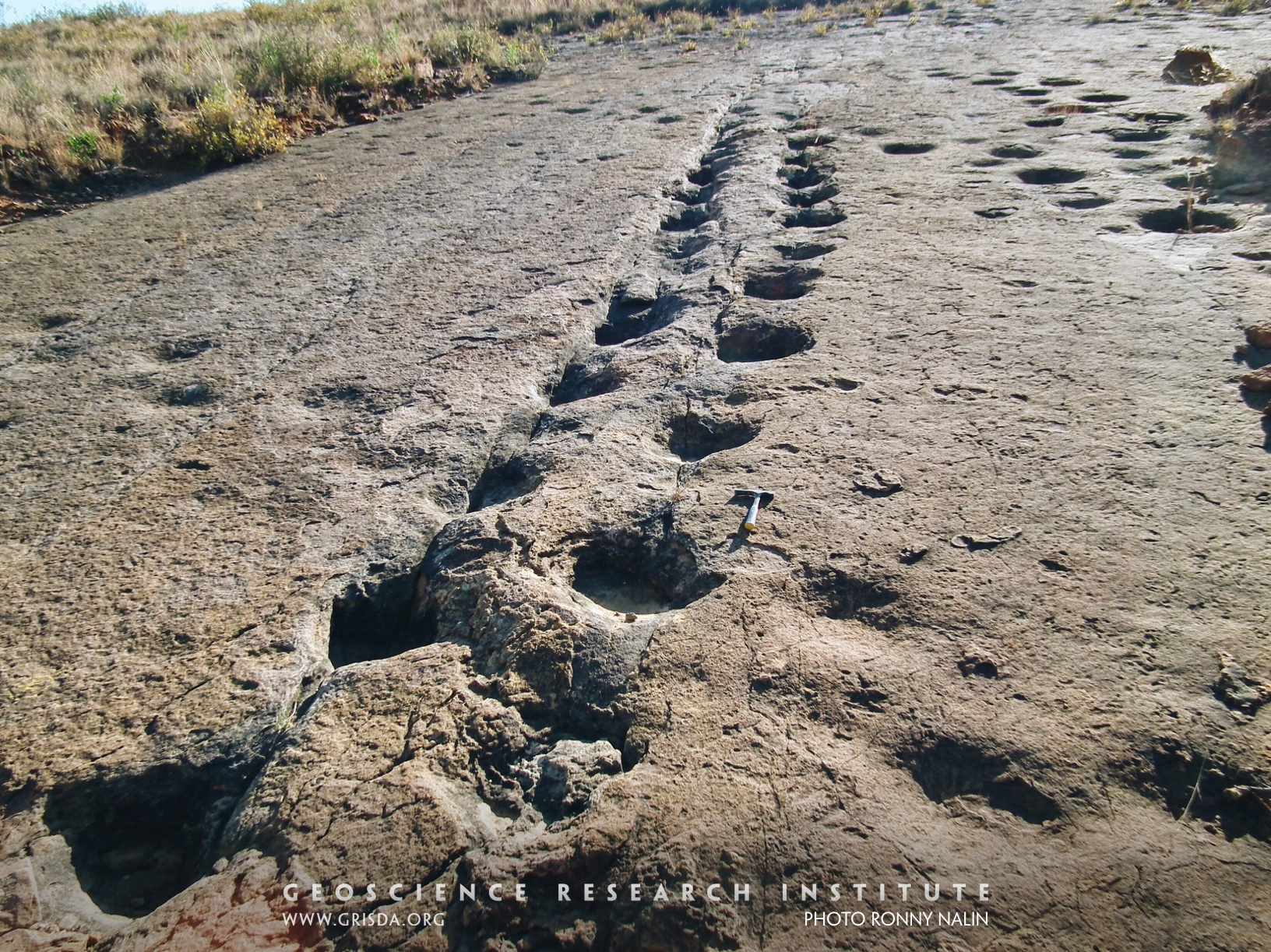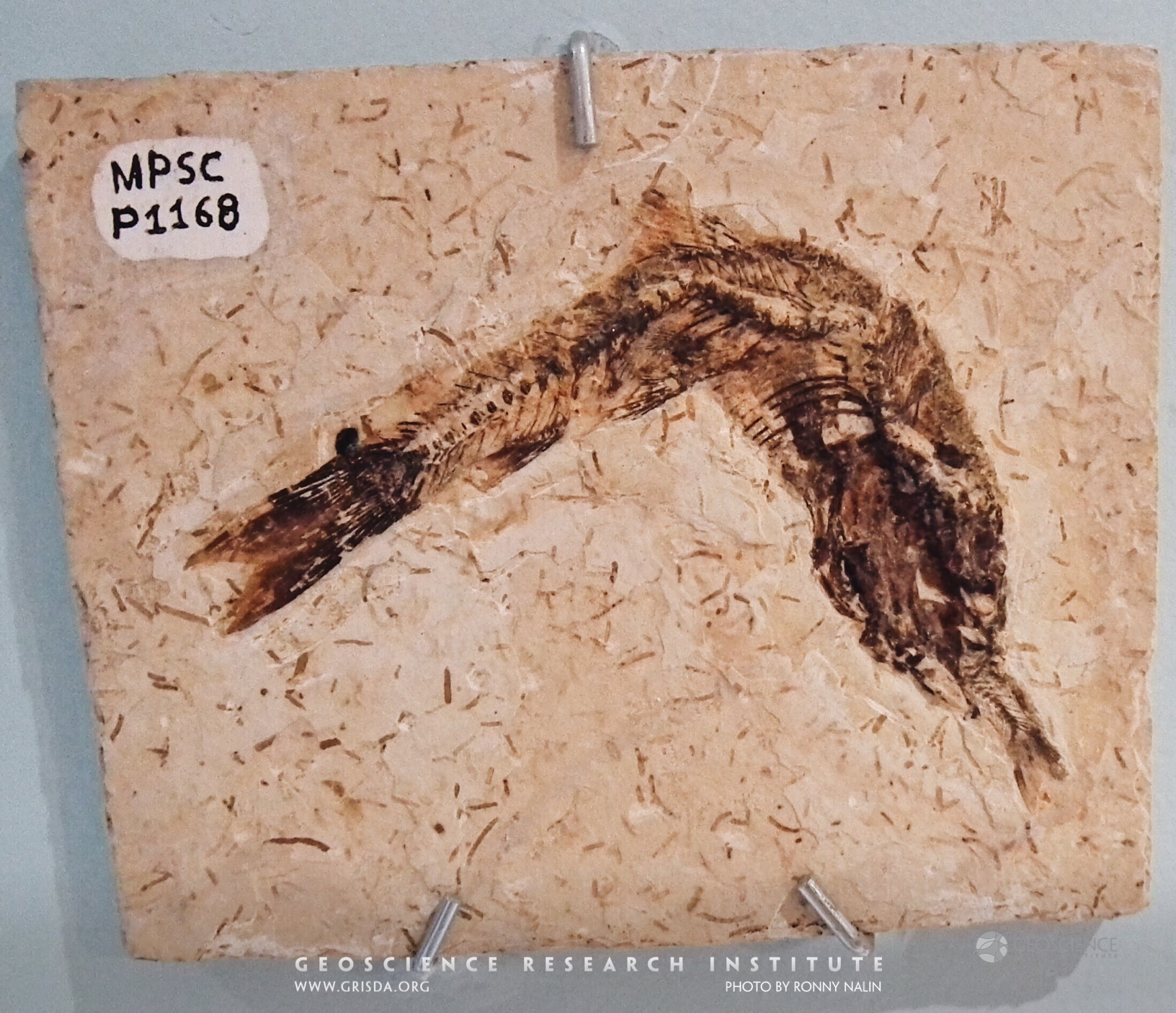©Copyright 2018 GEOSCIENCE RESEARCH INSTITUTE
11060 Campus Street • Loma Linda, California 92350 • 909-558-4548


What Are Fossils?
Fossils are remains or other evidence of organisms that lived in the past and are preserved in the rocks. Common fossils include hard parts like bones, teeth and eggs of animals, wood, leaves and other parts of plants, shells, corals, and tiny shells of microfossils. Exceptionally, soft tissue of plants and animals may be found fossilized in permafrost (like Ice Age mammoths preserved in the Siberian tundra), insects and seeds preserved in amber (resin from trees), bodies of animals preserved by mummification, plant material preserved in peat, and other rare occurrences of fossilized soft tissue. Some fossils consist of impressions of body parts, for example, the mark of the skin of dinosaurs left on the preserved footprints, impressions of plant leaves and insects, etc. Some ancient molecules (DNA, protein, keratin, collagen, etc.) have been preserved in bones, shells and other fossils.
Another type of fossils is called trace fossils or ichnofossils, in which no body parts are preserved, but evidence is preserved of the activity of the organism before it died. Common ichnofossils are burrows made in the sediment before it became indurated, footprints of vertebrates and invertebrates walking on soft ground, borings in shells and rocks, coprolites (fossil excrements), and root traces.

The many different kinds of fossils occurring in sedimentary layers form what is called the fossil record. The fossil record is incomplete and biased. That means that many groups of organisms are rarely or never represented as fossils. Some kinds of organisms are much scarcer as fossils than when they were alive. Most animals that live today are insects or other land invertebrates, but they are very rare in the fossil record. The fossil record is biased in that animals with hard shells and skeletons are represented better than soft-bodied animals or plants (jellyfish, insects, algae, etc.). It is also biased in that land animals are poorly represented. Despite these limitations, paleontologists agree that the fossil record is adequate to study the past.
How Do Fossils Form?
Fossils occur in sedimentary rocks, namely rocks that formed by accumulation of small particles as sand or clay, or by chemical or biological precipitation of minerals like calcite or silica. The collection or set of fossils is called fossil record, which is a record of death in the past. In order for organisms to become fossils, three main conditions are necessary. First, possession of hard parts like bones, shells or wood, though, exceptionally, soft parts may fossilize. Second, the organisms must be buried rapidly during or after death. What happens if rapid burial does not occur? Based on what happens in modern environments, dead organisms are scavenged by other organisms or decay and are destroyed by bacterial decomposition. The likelihood of preservation is extremely low without rapid burial following death. A third condition is determinant for fossilization: there must be an exchange of minerals between the buried parts and the sediment That exchange happens because of the presence of water in the sediment during burial.
How Long Does It Take to Form a Fossil?
The fossilization process cannot require millions of years. In fact, it may happen really fast. Observations in modern environments indicate that decay of fish, shrimp, jellyfish, sea stars, insects, etc. occurs in a few days or weeks after death, if they are not scavenged. If the three conditions for fossilization mentioned above occur, fossils may form relatively quickly. Paleontologists assert that organisms may become fossils in a span of time between a few hours to a few years.

What Do We Learn from Fossils?
Fossils tell us a story of life in the past. They may also tell us how an organism died, usually by rapid burial during a catastrophe. By examining the physical characteristics of the fossils, we may infer their original size, shape, method of locomotion, diet, and even behavior and ecological relations with other organisms and the environment in which they lived. The study of the enclosing sediment gives us important information to infer the environmental conditions in which the organisms lived or were transported and buried. For example, dinosaur footprints are common in many areas of the world, and the study of the prints and the sediment in which they occur gives us a glimpse about the size of these animals, their locomotion and behavior. Only in extremely rare instances fossils tell us something about their original coloration or the physiology of their internal organs.
Do Fossils Occur in a Specific Order in the Geologic Layers?
The geological record consists of layers, many of which contain fossils. These fossils do not occur randomly throughout the layers, but in a sequence that seems consistent in different localities across the planet. The sequence in which they occur may be interpreted differently depending on the worldview of the observer. One explanation is that the fossil record was formed by the catastrophic global Genesis flood, as written in the Bible.
In a global flood, the lowest surfaces would be expected to be covered first with water and sediment. Since the lowest surfaces are the ocean floors, we would expect to find marine fossils to form before terrestrial fossils. As the ocean floors were covered with sediment, we might expect to find fossils of species from low-lying terrestrial areas, followed by fossils of species from higher elevations. This theory was first proposed by Harold W Clark[1] and is called the Ecological Zonation Theory.
Several predictions of Ecological Zonation Theory are fulfilled in the fossil record. For example, the lowest layers with abundant fossils have only marine organisms, representatives of most of the body plans, or phyla, known from living organisms, as well as many types that are now extinct. The abrupt appearance of diverse types of marine animals at the bottom of the fossil layers is famously known as the Cambrian Explosion. Also, fossils of terrestrial organisms appear in a sequence that correlates reasonably well with increasing terrestriality (i.e., the degree to which an organism is fit for life on land). We would expect that species living in the first habitats to be destroyed would be least likely to have survived the flood and still be living. In general, this is what we find. These general patterns are consistent with Ecological Zonation Theory. However, there has been very little research on the theory, and much more research is needed.
Does the Fossil Record Suggest Evolutionary Change?
The fossil sequence shows us the sequence in which various types of organisms were buried, but it does not tell us how the fossilized organisms originated. The worldview of materialistic Darwinism and theologies such as theistic evolution attempt to explain the fossil sequence as a record of evolutionary change over long ages of time. Evolutionary theories explain some features of the fossil record, such as the sequence of first appearances of the vertebrate classes, and the gradually changing composition of fossil assemblages in some parts of the geologic column. On the other hand, it has been notably unsuccessful in explaining other features of the fossil sequence, such as the abrupt appearance of diverse animal forms in the Cambrian layers, a feature known as the “Cambrian Explosion.” The first fossils in the basal Cambrian layers show high complexity and diversity, something not predicted by Darwinian theory, but which fits well in the global Genesis Flood model. The pattern of abrupt appearance of fully formed and diverse species within groups is repeated on a less spectacular scale in other organisms such as dinosaurs, and flowering plants.
Gradual evolution also fails to explain adequately the shortage of potential transitional links between the different types of organisms throughout the column. The majority, if not all, of animal and plant forms appear abruptly in the fossil record without known ancestors or intermediate forms. For example, bats, ants, dragonflies, cockroaches and many others appear in the fossil record without any apparent ancestors, and look much like their modern counterparts. This pattern of abrupt appearance does not fit models that invoke gradual evolution, and may fit better in a creation and global catastrophe model. Moreover, Darwinian theory fails to explain how changes in genetic information can produce new types of organs and body plans. Because of these failures, Darwinian theory is not a satisfactory explanation for the fossil sequence.
Raul Esperante, PhD
Senior Scientist
Geoscience Research Institute
References
[1] Clark, HW. The New Diluvialism. (Angwin, CA: Science Publications, 1946)